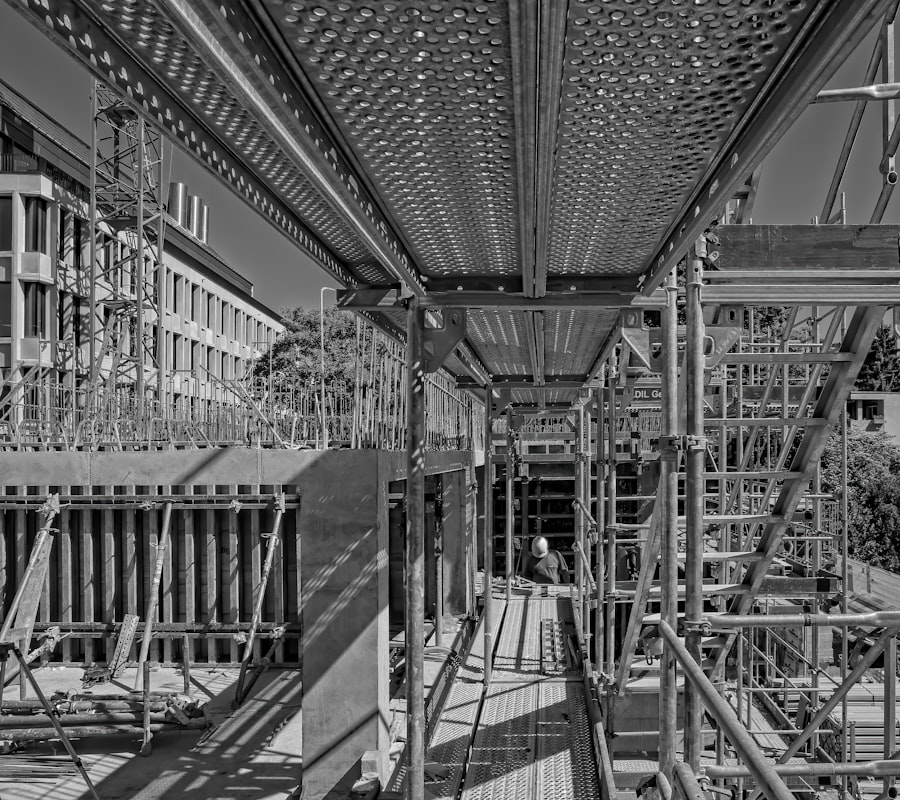
The history of ironworking in the United States is a tale woven into the very fabric of the nation’s industrial evolution.
The demand for iron products surged as railroads expanded and urban centers grew.
Blacksmiths, who had traditionally worked with iron for tools and agricultural implements, began to transition into more specialized roles as the need for structural ironwork emerged. The introduction of the Bessemer process in the 1850s revolutionized steel production, allowing for the mass production of stronger and more durable materials. This innovation laid the groundwork for the construction of iconic structures, such as bridges and skyscrapers, which would define American architecture.
By the late 19th century, ironworking had evolved into a distinct trade, with labor unions forming to protect workers’ rights and improve working conditions. The establishment of the American Federation of Labor (AFL) in 1886 marked a significant turning point, as it provided a platform for various trades, including ironworkers, to advocate for better wages and safety standards. The construction of monumental projects like the Brooklyn Bridge and the Statue of Liberty showcased the skills of ironworkers and solidified their importance in the burgeoning American economy.
Key Takeaways
- Ironworking in the United States has a rich history dating back to the 17th century, with the craft evolving from traditional blacksmithing to modern structural steel fabrication.
- Training and education for ironworkers typically involves apprenticeships, vocational programs, and on-the-job training to develop the necessary skills and knowledge for the trade.
- Ironworkers play a crucial role in construction projects, specializing in the installation and assembly of structural steel and reinforcing ironwork to create the framework for buildings, bridges, and other structures.
- Job opportunities for ironworkers are expected to grow in the coming years, with potential for career advancement into supervisory or specialized roles such as welding or rigging.
- Despite the promising career prospects, ironworking comes with its own set of challenges and risks, including working at great heights, heavy lifting, and exposure to hazardous materials, requiring strict adherence to safety protocols.
Training and Education for Ironworkers
Training and education for ironworkers are critical components that ensure safety and proficiency in this demanding trade. Most aspiring ironworkers begin their journey through apprenticeship programs, which typically last three to four years. These programs combine on-the-job training with classroom instruction, allowing apprentices to gain hands-on experience while learning about safety protocols, blueprint reading, welding techniques, and rigging.
Organizations such as the Iron Workers International Union offer structured apprenticeship programs that are recognized nationwide, providing a pathway for individuals to enter the field with a solid foundation. In addition to traditional apprenticeships, many community colleges and technical schools offer specialized courses in ironworking. These programs often include certifications in welding and other essential skills that enhance employability.
The National Center for Construction Education and Research (NCCER) also provides a standardized curriculum that covers various aspects of ironworking, ensuring that workers are well-prepared for the challenges they will face on job sites. Continuous education is vital in this field, as advancements in technology and materials require ironworkers to stay updated on best practices and new techniques.
The Role of Ironworkers in Construction Projects

Ironworkers play a pivotal role in construction projects, serving as the backbone of structural integrity in buildings and infrastructure. Their responsibilities encompass a wide range of tasks, from erecting steel frameworks to installing metal components that support roofs and bridges. Ironworkers are often among the first tradespeople on-site, setting the stage for subsequent construction activities.
They interpret blueprints and specifications to determine how steel components should be assembled, ensuring that structures meet design requirements and safety standards. The work of ironworkers is not limited to just assembly; they also engage in welding, cutting, and reinforcing steel elements. This multifaceted role requires a deep understanding of engineering principles and an ability to work collaboratively with other trades.
For instance, during the construction of high-rise buildings, ironworkers must coordinate closely with electricians and plumbers to ensure that their installations do not interfere with one another. Additionally, they are responsible for adhering to strict safety regulations, often working at great heights while using harnesses and other protective equipment to mitigate risks.
Job Opportunities and Career Advancement for Ironworkers
| Metrics | Data |
|---|---|
| Number of job opportunities | High demand in construction industry |
| Median salary | Varies by location and experience |
| Job growth rate | Faster than average compared to other occupations |
| Career advancement | Potential to become supervisors or project managers |
The job market for ironworkers is robust, driven by ongoing infrastructure projects and urban development across the United States. As cities continue to grow and aging infrastructure requires repair or replacement, the demand for skilled ironworkers remains high. According to the Bureau of Labor Statistics (BLS), employment opportunities for ironworkers are projected to grow by 5% from 2020 to 2030, which is on par with the average growth rate for all occupations.
This demand translates into numerous job openings across various sectors, including commercial construction, residential building, and industrial projects. Career advancement opportunities for ironworkers are plentiful, particularly for those who demonstrate strong skills and a commitment to safety. Experienced ironworkers can move into supervisory roles or become project managers, overseeing entire construction sites and coordinating multiple trades.
Additionally, some may choose to specialize in areas such as welding or rigging, which can lead to higher pay rates and increased job security. Continuing education and obtaining certifications can further enhance an ironworker’s qualifications, making them more competitive in a dynamic job market.
Challenges and Risks in the Ironworking Industry
Despite its many rewards, the ironworking industry is fraught with challenges and risks that workers must navigate daily. One of the most significant hazards is working at heights, where falls can result in severe injuries or fatalities. According to data from the Occupational Safety and Health Administration (OSHA), falls are one of the leading causes of death in construction-related occupations.
To combat this risk, ironworkers must adhere to strict safety protocols, including using harnesses, guardrails, and safety nets when working on elevated structures. Another challenge faced by ironworkers is exposure to hazardous materials such as welding fumes and chemicals used in metal treatments. Prolonged exposure can lead to respiratory issues or other health problems if proper precautions are not taken.
Employers are required to provide personal protective equipment (PPE) and ensure that workers are trained in safe handling practices. Additionally, the physical demands of the job can lead to musculoskeletal injuries over time; therefore, maintaining physical fitness and employing proper lifting techniques are essential for longevity in this profession.
The Future of Ironworking in America

The future of ironworking in America appears promising as technological advancements continue to reshape the construction landscape. Innovations such as Building Information Modeling (BIM) allow for more efficient planning and execution of projects by providing detailed digital representations of structures before they are built. This technology enhances collaboration among trades and minimizes errors during construction, ultimately leading to safer job sites and reduced waste.
Moreover, as sustainability becomes a focal point in construction practices, ironworkers will likely play a crucial role in implementing green building techniques. The use of recycled steel and energy-efficient materials is on the rise, necessitating skilled workers who understand these new methodologies. As infrastructure investment increases at both federal and state levels—especially following initiatives like the Infrastructure Investment and Jobs Act—ironworkers will be essential in modernizing transportation systems, bridges, and public facilities across the nation.
In conclusion, while challenges persist within the industry, including safety concerns and physical demands, the outlook for ironworking remains bright. With ongoing training opportunities and advancements in technology paving the way for innovation, ironworkers will continue to be vital contributors to America’s construction sector for years to come.
If you’re exploring various career paths in the USA, you might find it interesting to compare the role of ironworkers with other demanding professions. For instance, the career of EMTs and Paramedics is another field that requires physical stamina, quick decision-making, and a strong commitment to helping others in critical situations. You can learn more about what it takes to pursue a career in emergency medical services by reading this related article on



